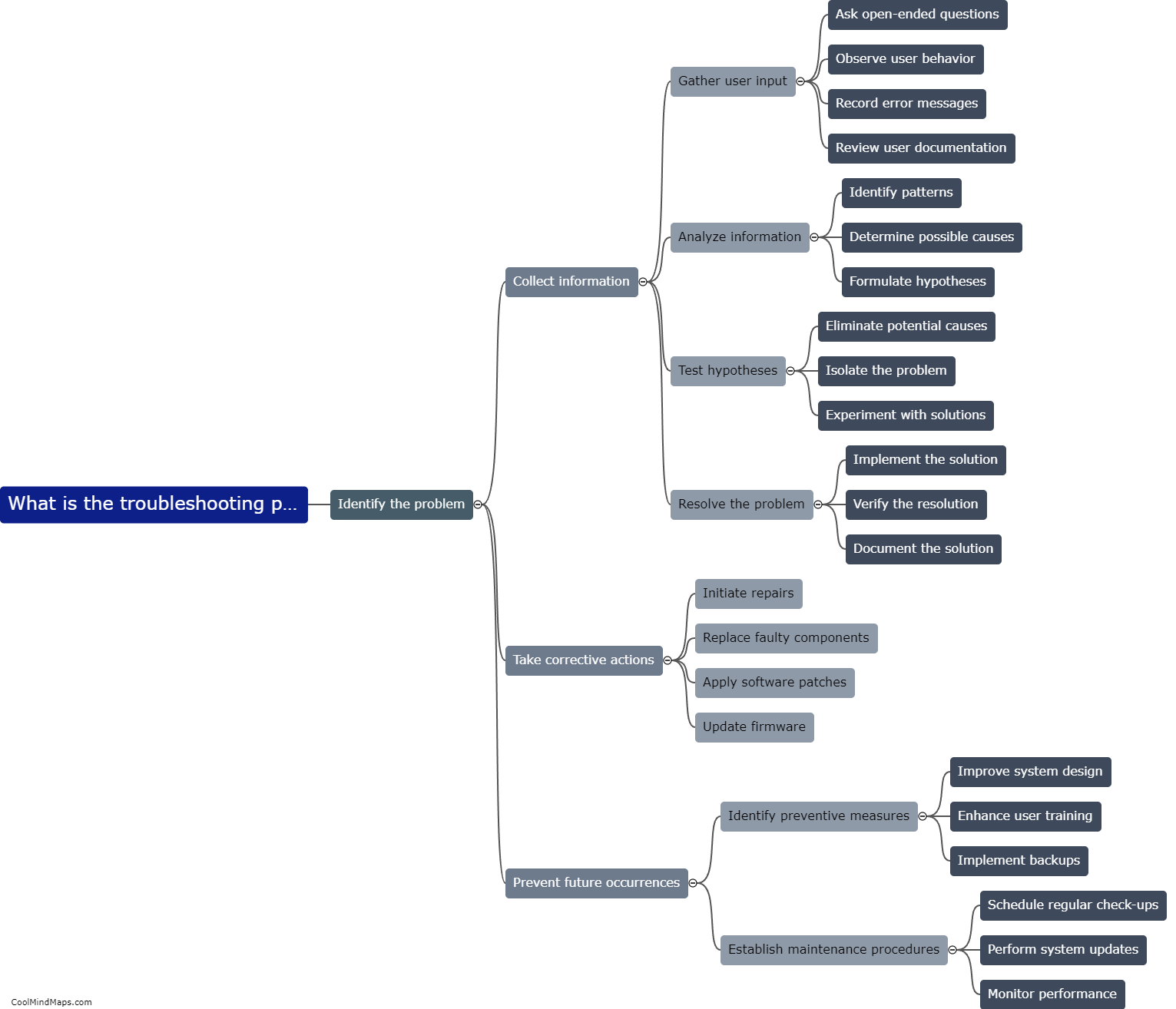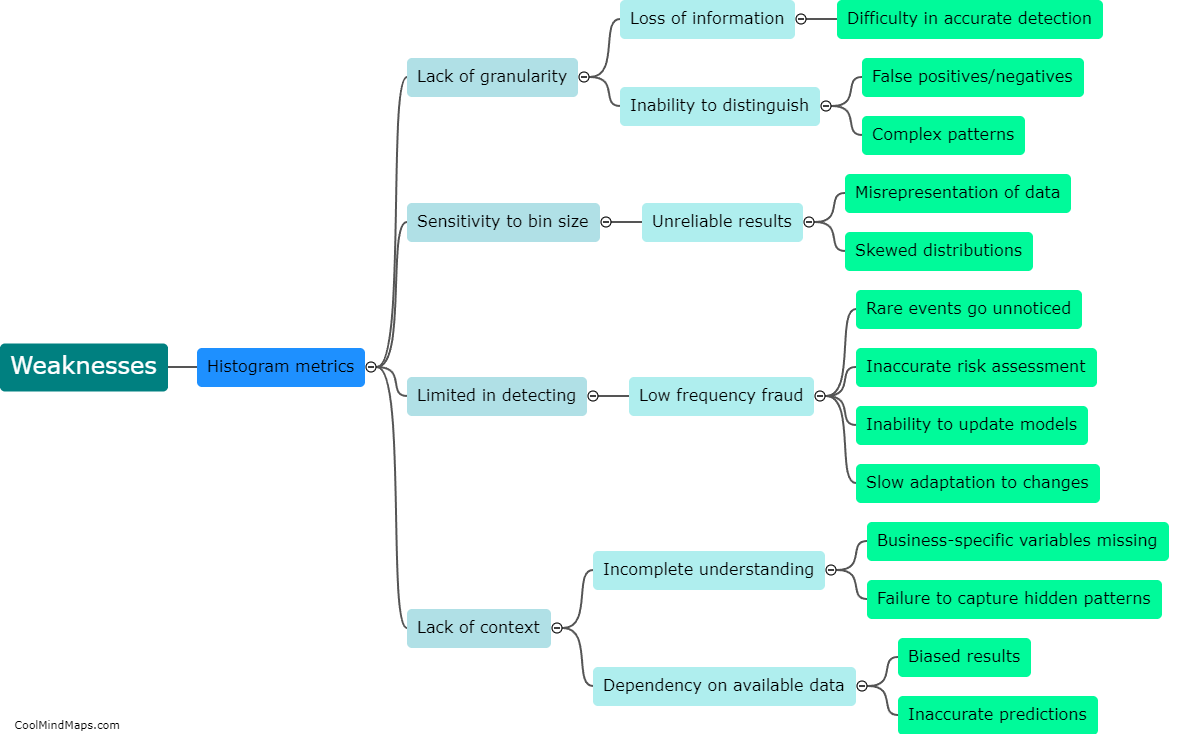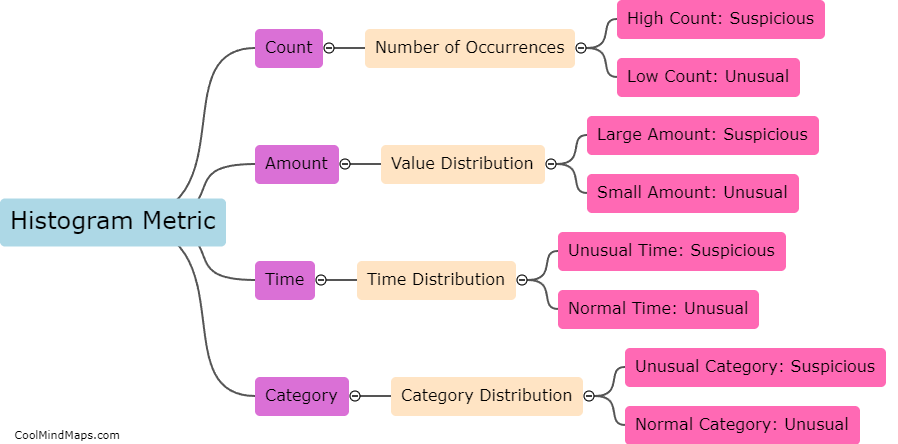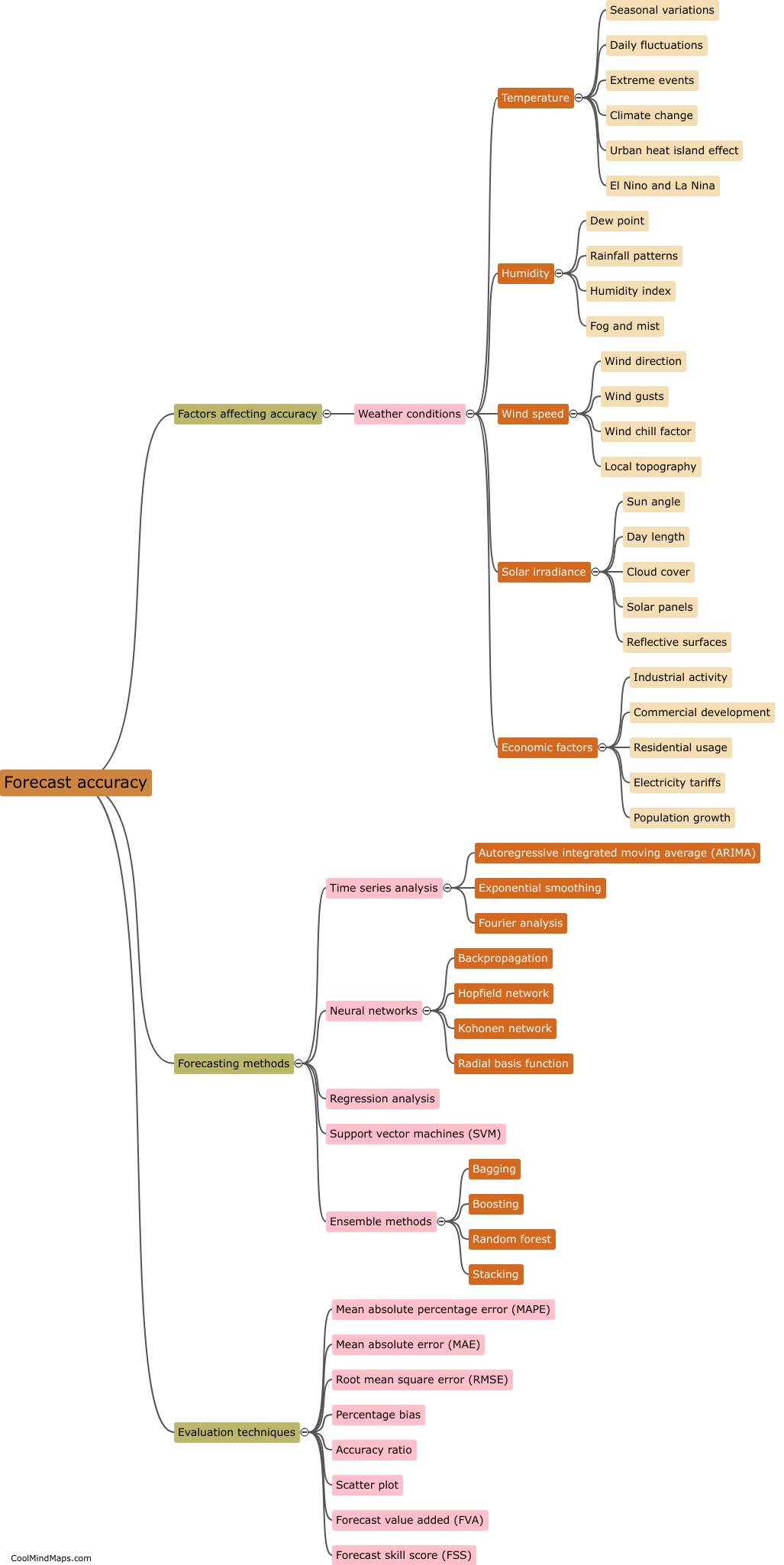What are the main types of histogram metrics used in fraud detection?
In fraud detection, histograms are commonly used to visualize and analyze the distribution of certain metrics related to fraudulent activities. The main types of histogram metrics used in fraud detection include transaction amounts, transaction frequencies, and transaction time intervals. Transaction amounts histograms are used to identify anomalies in the distribution of transaction values, allowing detection of unusually large or small amounts. Transaction frequencies histograms help identify spikes or unusual patterns in the number of transactions made by an individual or a group. Transaction time interval histograms analyze the time gaps between transactions to detect irregularities, such as unusually short or long intervals between transactions. These histogram metrics play a crucial role in uncovering suspicious patterns and flagging potential fraud cases.
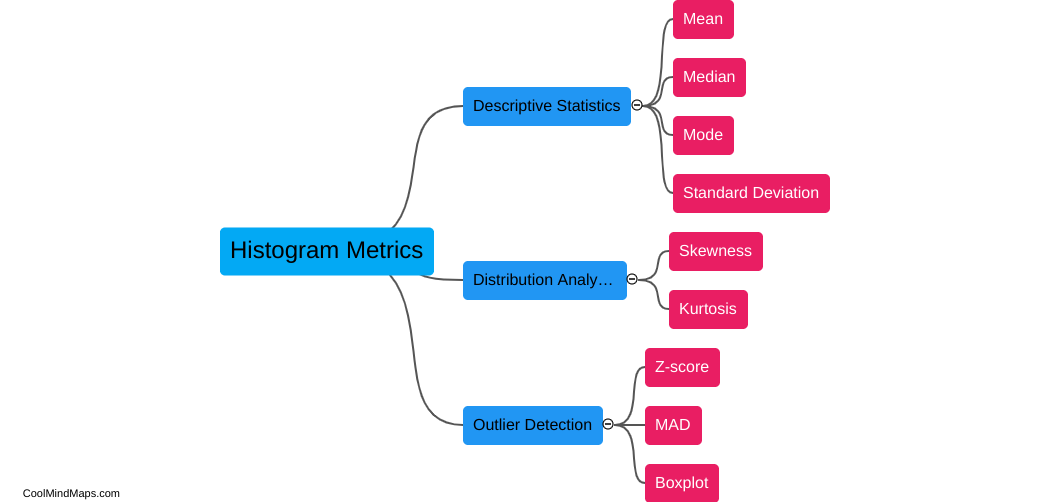
This mind map was published on 8 October 2023 and has been viewed 99 times.


